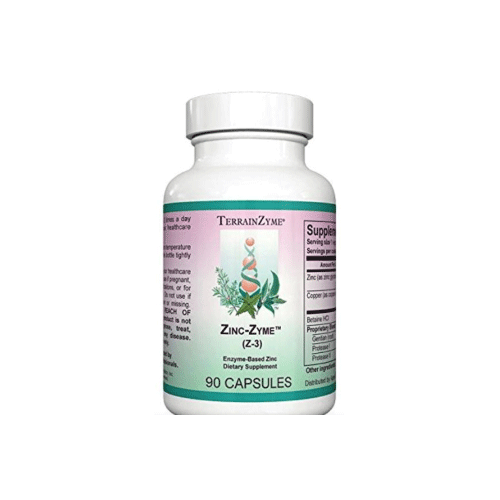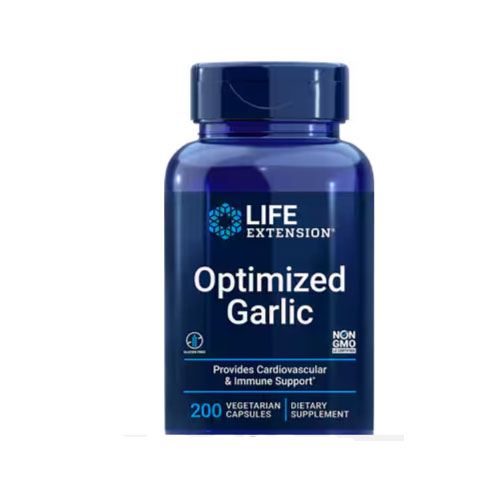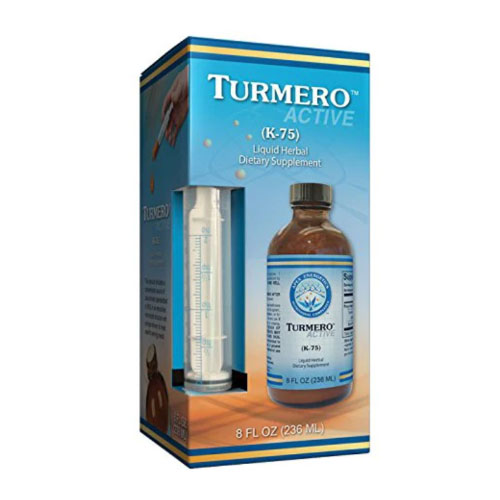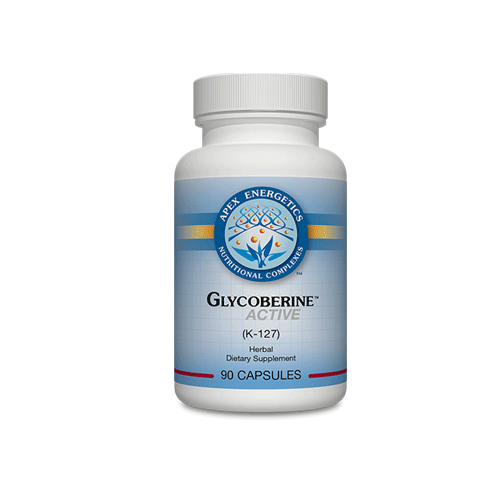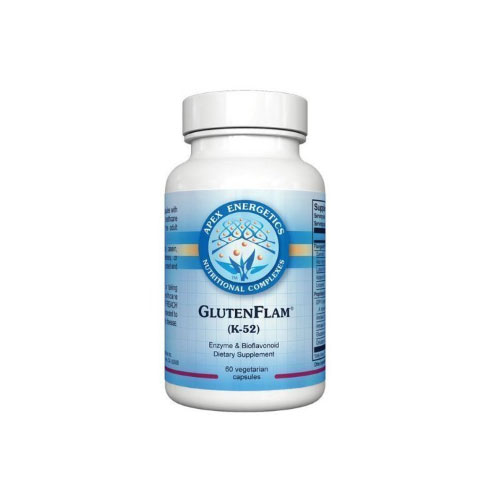The Hair Restoration Project in Reno Nv
“Give me a head with hair, long beautiful hair
Shining, gleaming, streaming, flaxen, waxen
Give me down to there, hair, shoulder length or longer
Here baby, there, momma, everywhere, daddy, daddy
Hair, flow it, show it
Long as God can grow it, my hair.”(1)
Who doesn’t admire a fine head of hair? We covet, envy, and even worship a colossal head of hair.
My late great mother, (lung cancer, not from cigarettes, but second hand smoke from Atlantic CIty, New Jersey casino air) in hospice, on the day before she passed, woke from her morphine induced “sleep”, looked around, and asked her final words, “How’s my hair?” (True story. To be fair, Mom was always a Jackie Kennedy, never Onassis, wannabe.)
In the United States, by age 60, 65% of men, and 80% of women have noticeable hair loss. In total, 56 million men and women experience hair loss. (2)
The Life Cycle of Hair (3)
To understand hair loss and what can be done to correct it, we must understand the natural growth, and demise, of a single hair follicle. Hair growth takes place in four phases: (4)
1. ACTIVE GROWTH (ANAGEN) PHASE
The active growth phase lasts two to six years. Hair grows 18 to 24 inches before entering into the transitional phase. 80-90% of all hair follicles are in this growth phase on a healthy head.
2. TRANSITIONAL (CATAGEN) PHASE
The shortest of the hair cycles lasting one to two weeks occurs when the lower third of the hair follicle is cut off from its blood supply. The hair itself shrinks to 1/6 its expected length. Catagen hair accounts for 2-3% of all follicles at any one time.
3. RESTING PHASE (TELOGEN) PHASE
The dormant stage lasts one to four months. 10-15% of all hairs are in the Telogen phase. Telogen hair sheds or is pushed out by new hair follicles as the cycle renews. Ideally, only 10-15% of hairs are telogenic. When more than 20% of hair are in this “resting” phase, noticeable thinning occurs.
- SHEDDING PHASE (EXOGEN) PHASE
Hairs in this phase shed easily as the follicles are preparing to return to the Anagen phase.
Types of Hair Loss (5)
- TELOGEN EFFLUVIUM
An abnormally high percentage of hair in the Telogen phase results in an overall thinning of hair. Common causes of this type of hair loss include chronic stress, toxins, fungal infections, nutritional deficiencies, and hormonal imbalances.
- ANDROGENETIC ALOPECIA
“Male-pattern” baldness is not limited to men. In women, the hair thins at the crown or widens in the part. The hair thins revealing a bare scalp.
- ALOPECIA AREATA
Pattern presents as patches of lost hair. Alopecia Areata is usually an autoimmune condition with an association of nail issues also.
- MISCELLANEOUS TYPES
- Traction from braids, weaves or wigs
- Chemotherapy-Related Hair Loss
- Frontal Fibrosing Alopecia (FFA)
- Lichen planopilaris (LPP)
Etiology of Hair Loss (6)
- Sub-Optimal Thyroid Function
The thyroid is the body’s “gas pedal,” determining how fast or slow all bodily functions operate. When slowed due to inadequate “fuel,” namely usable thyroid substrate, the oils, fluids, and tissues, especially the hair follicles function inadequately.
The hair follicles spend an abnormal amount of time, and hence an abnormal number of hair follicles are in the Telogen or resting phase, resulting in the form of Telogen Effluvium.
- Nutritional Deficiencies
Nutritional deficiencies, specifically silica and zinc lead to hair loss. To determine deficiencies, we perform micronutrient testing.
- Stress
In 1881, George Miller Beard, M.D., a neurologist and graduate from the New York College of Physicians and Surgeons, described a condition based on excess “nervous energy.” Constant over stimulation of the nervous system from the fast paced American lifestyle resulted in “neurasthenia,” burnout, or nervous exhaustion.
Symptoms of neurasthenia included nervous dyspepsia, insomnia, hysteria, hypochondria, asthma, sick-headache, skin rashes, hay fever, premature baldness, inebriety, hot and cold flashes, nervous exhaustion, brain-collapse, and forms of ‘Elementary Insanity.” The best educated and most sophisticated Americans were the most afflicted. Theodore Roosevelt and Frederic Remington were two prominent figures of their day suffering from “neurasthenia.”
The “cure” was a withdrawal from the modern life, rest, and a less hectic lifestyle. Critics countered that urban life in the late nineteenth century had produced a “pathetic, pampered, physically and morally enfeebled 97-pound weaklings, unworthy successors to the stalwart Americans who had fought the Civil War and tamed a continent.”. (7)
Physicians pigeonholed patients into this “nervous energy” category, relieving themselves of more vigilant diagnosis. Early signs of tuberculosis, heart failure, and epilepsy were chalked up to neurasthenia and when later discovered to be in error, gave fuel to those who saw this “malady,” as a sham.
The term neurasthenia is no longer used to describe any medical condition, but the conditions that lead to its “discovery,” diagnosis and its’ symptoms are remarkably similar to a hormonal condition with clear diagnostic criteria known as “Adrenal Fatigue.”
The adrenal glands, pea sized organs, sit on top of the kidneys. They produce hormones that regulate blood pressure, electrolytes balance, blood sugar, immune responses, digestion, and stress responses.
In regards to the latter, constant, unremitting stress, as experienced by nearly everyone in today’s society, hijacks normal hormonal responses, redeploying the adrenals’ resources, in the form of the hormone cortisol, to combat the “evil” of the moment. The other adrenal functions, digestion, immune response, and thyroid hormone production, are temporarily put on hold or slowed until the stress has passed.
Cortisol is our protector. It lies in wait, like the lineup of computer programs opened at startup and running in the background, ready at an instant, when needed, to spring into action.
In an ideal world, the stressor passes quickly, and the adrenals resume lurking behind the scene awaiting the next crisis. In our non-ideal world, one stress begets a second stress, which begets a third stress, ad infinitum, putting the adrenal gland into permanent overdrive. Cortisol floods the body, driving the adrenals to handle the stress. Eventually, it cannot keep up. The result is adrenal “burnout” or fatigue.
Exquisitely impacted by the constant flooding and eventual depletion of cortisol is the thyroid. High cortisol levels signal the brain to lower the production of stressor hormones and inadvertently thyroid hormone.
Recall the critical step of converting T4 to the usable thyroid hormone free T3. Stress hormones affect the enzymes that convert T4 to T3 converting T4 into an inert unusable reverse T3.
Chronically elevated cortisol levels release inflammatory cells which desensitize thyroid receptors to thyroid hormone. Like people with diabetes who do not respond to insulin, adequate thyroid hormone may exist, but the result is poor thyroid utilization.
Increased circulatory cortisol increases estrogen in the blood stream. Estrogen increases thyroid binding globulin, tying up T3 and T4, reducing hormone levels to achieve the conversion to free T3.
Elevated cortisol levels with its’ natural state of chronic inflammation trigger “leaky gut syndrome,” latent infections leading and autoimmune diseases.
Hair follicles accumulate in the resting (Telogen) phase.
- Sex Hormone Imbalances
Male: Excess testosterone metabolizes into dihydrotestosterone (DHT) and estradiol. DHT attaches to hair follicles, effectively strangling them causing “organ” death. The key to preventing, slowing, or possibly reversing the effects of DHT is by inhibiting this conversion of Testosterone into DHT. (Essentially the mechanism of action of hair loss products such as Rogaine.)
Found primarily in hair follicles and the prostate gland, Type 2 5alpha reductase is the enzyme that that converts testosterone into DHT. The conversion of too much testosterone to DHT results in androgenetic alopecia. As a man ages, he retains estrogen and converts testosterone into estrogen at a higher rate. The result is 1+1=4, the 4 being excess DHT as a result of excess estrogen.
Women: Estrogen dominance is the culprit in women. Child birth, birth control medications, stress, toxins, along with entrance into the perimenopausal arena, create a dominant estrogen pattern.
Estrogen signals the liver to produce inordinate amounts of Thyroid Binding Globulin (TBG). T4, the “storage unit” of the thyroid must convert to T3, the hormone that the “work.” Excess TBG leads to an inability to convert T4 to T3, resulting in a relative hypothyroidism and Telogen Effluvium.
Estrogen dominance results in excess DHT, leading to a female version of “male pattern” baldness. (8)
Miscellaneous areas to explore if estrogen dominance is ruled out: Heredity, insulin resistance, polycystic ovarian syndrome and a low antioxidant state. (9)
- Medications Causing Hair Loss (10)
Antibiotics: gentamicin, chloramphenicol
Anticoagulants: warfarin, heparin
Antidepressants: fluoxetine, desipramine, lithium
Anticonvulsants: valproic acid, phenytoin, carbamazepine
Cardiovascular meds: ACE inhibitors, beta blockers
Chemotherapy drugs: doxorubicin, vincristine, etoposide
Endocrine drugs: bromocriptine, clomiphene, danazol
Gout medications: colchicine, allopurinol
Lipid lowering drugs: gemfibrozil, fenofibrate, cholestyramine, clofibrate
NSAIDS: ibuprofen, indomethacin, naproxen
Reflux/ulcer medications: cimetidine, ranitidine, famotidine
Antithyroid drugs: iodine, PTU
Retinoids: vitamin A overdose, isotretinoin
- Trichotillomania-Repetitive hair pulling resulting in hair loss. Considered an OCD variant. Treatment usually includes behavioral therapies, SSRI’s or other drugs to treat OCD. Metabolic therapies include NAC, inositol, L-tryptophan, niacin and vitamin B6.
- Scarring Alopecia-Results from burns, radiation, or other injuries or diseases.
Scarring alopecia destroys the dermis with permanent hair loss.
Rx: Vitamin A 150,000 IU QD for six weeks stopped disease progression.
Maintenance Rx: 150,000 IU qd for three 6 week periods every year. (11)
Conventional Therapies for Hair Loss (12)
Cyproterone acetate Minoxidil
Flutamide Ketoconazole
Finasteride Hair Transplantation
Dutasteride Light Therapy, Botulinum Toxins
Holistic Resolutions to Hair Loss
- Proper Hypothyroidism Diagnosis & Treatment (13-14)
The thyroid functions as the body’s “gas pedal.” Like Goldilocks, we need it to be just right, not too little, not too much. The gland produces two major hormones, triiodothyronine (T3), the active hormone, and thyroxine (T4), the storage hormone. The thyroid also produces calcitonin, a hormone responsible for calcium balance and bone density and magnesium.
98% of all thyroid disorders result in hypothyroidism. Common symptoms include cold intolerance, unexplained weight gain, fatigue, thinning of the hair, the outer third of the eyebrow, the skin and the nails, increased body fat, energy loss, cognitive loss, memory loss, mood disorders, lowered body temperature (never greater than 97.6 F), fluid retention, and a poor sense of well-being.
Treatment is ineffective when the underlying cause of hypothyroidism is the immune system, not the thyroid per se., and not addressed. 25 percent of patients with autoimmune, Hashimoto’s thyroiditis develop polyglandular syndromes (such as pernicious anemia, diabetes, or adrenal insufficiency) or other autoimmune diseases (such as Sjogren’s syndrome).
- Key Supplements for Healthy Hair (15)
| Biotin
Zinc N-Acetyl-Cysteine B Vitamins (Particularly B6 and B12) Niacin |
Arginine
Lysine Saw Palmetto (for Men) Acetyl-L-Carnitine Iron Vitamin D |
Biotin-Water-soluble B-vitamin found in green leafy vegetables. Biotin regulates mitochondrial enzymes in hair follicles. Depleted by cigarette smoking, aging, excess alcohol, strenuous exercise, burn victims, shortened gut syndrome (GI resections), achlorhydria, and raw egg consumption. (16-17)
Use orally or in essential oil mixture. The dose is 30-100 mcg/day.
Zinc-Promotes cell reproduction, tissue growth, and repair. Zinc maintains the oil-secreting glands attached to hair follicles. A study showed that 15 patients with alopecia areata received 45 mg of zinc TID. All had the complete return of hair growth within six months. (18) Maintenance dose is 15 mg per day along with 1 mg copper as a balance.
N-Acetyl-Cysteine-Precursor to glutathione the most powerful antioxidant in the body. Protects DNA from chemical damage, detoxifies heavy metals, and it keeps arteries and airways open. It activates essential functions of the immune system.
B Vitamins (B6, B12)-In the form of Pyridoxal 5-Phosphate (PLP), the B Vitamins act as catalysts to activate the enzymes and chemical reactions to commence the metabolism of keratin and melanin in the hair follicles. B vitamins control hormone release., regulating androgen interaction with hair metabolism. Testosterone breaks down into dihydrotestosterone (DHT). Elevated DHT levels diminish hair growth by decreasing the length of the anagen, hair growth phase, and the follicle size. Vitamin B6 binds to the testosterone receptors, stopping DHT formation.
Niacin-Vitamin B3 converts carbohydrates into energy, delivers the energy to cells where needed, and maintains cell integrity. Niacin is a vasodilator, hence the niacin “flush” so common when taken, “washes” carbohydrates through the body, reducing visceral fat and serum cholesterol. The flush can be minimized by taking niacin with a meal or starting (with a) low dose and gradually increasing its potency.
The vasodilator effect of niacin delivers increased oxygen and nutrients to the hair follicle resulting in thicker hair.
Arginine- L-arginine, a precursor to nitrogen oxide, opens the potassium channels of the cell, improving blood supply to the hair root.
Lysine-An essential amino acid, lysine stimulates collagen and is necessary for restoring damaged hair.
Food sources for lysine include fish (especially salmon, sardines, and cod), dairy, poultry, red meat, pork, legumes, nuts, spirulina, and pulses.
Saw Palmetto (for Men)-Prevents conversion of testosterone to DHT
Acetyl-L-Carnitine- Up regulates proliferation and down regulates apoptosis in hair follicle keratinocytes. Turns fat into energy. Acetyl-L Carnitine improves the membrane potential of the hair follicle along with potassium channel function within withering hair follicles.
Iron-A lack of iron results in a decrease in hemoglobin, the ingredient that carries oxygen for growth and repair of all cells including hair follicles. Iron deficiency states move hair follicles into a premature and prolonged telogen (resting) phase.
Hair growth is a “non-essential” bodily function. It is one of the first systems to shut down in a state of iron deficiency. Hence, hair loss is an early warning sign of iron deficiency anemia.
Vitamin D-Essential for calcium homeostasis, immune regulation, and cell growth. A host of autoimmune diseases, including alopecia areata, exhibit low levels of Vitamin D. The severity of serum 25(OH)D deficiency is inversely related to the severity of hair loss.
Gluten-Hair loss is an early sign of gluten intolerance. In all cases of alopecia or extensive hair loss, we recommend a strict gluten free diet for four weeks as a trial. (19)
Vitamin A-Hair loss is a symptom of Vitamin A toxicity, especially in renal failure. Hair recovers when toxicity eliminated. (20)
Emu Oil-Contains linolenic acid a potent 5-alpha reductase inhibitor. Compound with virgin coconut oil to create an antibacterial, anti-inflammatory scalp treatment to DHT.
- Adequate Protein
Insufficient protein effects on hair growth. The CDC recommends 46 to 56 grams of protein per day to maintain hair growth. (21) Inadequate protein results in protein rationing by shutting down less important functions.
- Iron
When iron levels fall below 30 mg/L hair growth and regeneration are decreased. Iron deficiency commonly causes hair to be brittle and dry with narrowing or splitting of the hair shaft. Iron replacement restored hair growth in those whose sole issue was iron deficiency. (22-23)
- GI Evaluation-The 4 R’s
Depleted stomach acid leads to impaired protein digestion and decreased nutrient absorption. Disturbed GI flora leads to poor nutrient utilization. Pancreatic enzyme deficiency leads to malabsorption of essential fatty acids and zinc.
The “4 R’s” include:(24)
“Remove” inflammatory foods such as gluten, dairy, corn, soy, eggs, and sugar. Eliminate gastric irritants like alcohol, caffeine or drugs. Infections, even low-grade infections need to be treated with herbs, antiparasitic and antifungal medication, anti-fungal supplements and antibiotics when appropriate.
“Replace” essential nutrients for proper utilization of foodstuffs. Necessary for proper digestion are digestive enzymes, hydrochloric acid, and bile salts.
“Restore” Probiotics containing bifidobacteria and lactobacillus dosed from 25 to 100 billion units a day along with prebiotics and fiber restores normal GI flora.
“Repair,” L-glutamine along with zinc, omega three fish oil, vitamins A, C, E, slippery elm and aloe vera containing supplements rebuilds the damaged intestinal wall
Addressing Stress & Adrenal Fatigue
Diagnosis: The HPA AXIS Stress Index Panel. A four point saliva test performed in a single day. Normal is high upon awakening and then quickly fall and flatten out by noon.
Normal Saliva Cortisol Pattern
n
Treatment begins with reducing stress (easier said than). Proper diet, yoga, Pilates, Qi Gong, meditation, massage and infra red sauna are a few techniques used to control stress successfully. For some, a complete lifestyle change may be the only way to better health.
Supplements that enhance the adrenal glands include the adaptogenic herbs Rhodiola, Ginseng, and cordyceps , Pregnenolone, DHEA (cortisol precursors), 5 HTP (for sleep, well-being and mood regulation), adrenal glandulars (to balance cortisol and replenish the catecholamines dopamine, norepinephrine, and epinephrine), and if still no relief Cortef (low dose cortisone).
- Male Hormones and Hair Loss: Natural DHT Blockers
Saw Palmetto-Inhibits 5-alpha-reductase. 240-260 mg @ bedtime minimum.(25)
Progesterone-“anti-feminizing in men.” Prevents excess conversion of testosterone to estrogen in males by blocking type 2 5alpha reductase.
Nettle Root-Can be used topically with Coconut or Olive Oil and Rosemary extract as shampoo.
Pygeum-Inhibits DHT. Commonly used in combination with Saw Palmetto
Rosemary Oil-Inhibits DHT. Use as scalp massage
Pumpkin Seed Oil-Inhibits DHT. Can mix with apple cider vinegar as salad dressing.
- Female Hormones and Hair Loss
Proper balancing of bioidentical, not synthetic, progesterone to estrogen, will in many cases resolve hair loss. Fix the cause.
- Alkalinize the Body
Maximal DHT conversion occurs when the pH of the body is between 5.0 and 5.5. Fed by following the Standard American Diet. (S.A.D.), is an acid body state.
Alkalinizing the body prevents DHT from binding to hair follicles enabling them to thrive.
A liver Detox such as Dr. Clearfield’s Ultimate Paleo Cleanse will restore scalp pH to at least 7 in two weeks. By maintaining an alkaline environment, hair will regrow, stronger and thicker than before.
Below is a food chart comparing the relative acidity or alkalinity of different food groups to one another. It is evident that the “normal” American sets and up for failure by consuming highly acidic foods.
(26)
- Delayed Food Allergies
Do’s:
Bone Broth-Helps restore gut barrier (i.e. heals the “leaky gut”)
Fermented Vegetables and Beverages (i.e. sauerkraut, kimchi, beet kvass, coconut water kefir). High in Probiotics
Fish and Shellfish-High in Omega-3 fats. Eat at least one pound of cold-water, fatty fish per week EPA and DHA needs.
Organ Meats-Loaded with micronutrients that promote healthy immune function.
Micronutrients
Vitamins A & D: Immune enhancement.
Vitamin D supports proper T-regulatory cell function.
Cod liver oil is the best source of A & D.
Iodine & Selenium– Crucial for immune health and successful conversion of T4 to T3.
Glutathione: Promotes healthy function of T regulatory cells
Niacin (B3), Pyridoxine (B6), Vitamin C, Magnesium, Iron, Copper, Zinc, and Manganese.
Eliminate
Gluten Soy
Dairy Eggs
Corn Saturated and/or trans fats
Processed foods Sugar
Substitute For:
Salt: Powdered garlic, powdered onion, lemon juice, lime juice, lemon crystals, turmeric, ground cloves, oregano, ground allspice, celery seeds, coriander seeds, ground cardamom seeds
Butter/Fat: Olive oil, coconut oil, flaxseed oil, ghee
Sugar: Obtain sugar primarily from fruits and vegetables, not concentrated sources. Fruit purees flavored with lemon juice and spices (cinnamon, nutmeg, mint leaves, ginger, vanilla), Stevia, Xylitol in limited quantities.
Alcohol: Limited to an occasional glass of wine, beer or spirits. Red wine contains some health promoting phytochemicals and antioxidants.
Cereals: Nut flours
Cheese: Nut cheeses (cashew, dairy, soy free)
Milk: Almond milk, coconut milk
Protein: Ancient Nutrition Protein Bone Broth
Goitrogens (27)
In small amounts goitrogens increase the need for iodine. In large quantities, they can damage the thyroid. Goitrogens should be limited to 3-6 servings per week. Steaming can reduce the danger by ⅓ and thoroughly cook them and discard the water in case of boiling decreases the harm by 90%.
Cruciferous Vegetables C Others
| Bok Choy
Broccoli Brussel Sprouts Cabbage Canola Cauliflower Chinese Cabbage |
Collard Greens
Horseradish Kale Kohlrabi Mustard Greens Radishes Rutabaga Turnips |
Soy
Pine Nuts, Peanuts Millet Strawberries Pears, Peaches Bamboo Shoots Spinach Sweet Potatoes |
- Compounded Formulas
- Compounded Caffeine Formula (28)
- Caffeine 0.001% to 0.005% in VersaBase shampoo #4 oz (120cc)
- Shampoo scalp. Leave for 15 minutes and wash off. Repeat daily.
- Zinc pyrithione 1% in topical solution with or without minoxidil 10%. 4oz (29)
- Sig: apply to hair follicles qhs. Cover with shower cap and leave on all night. Wash out in the am.
- Melatonin 1m/mL in VersaBase Shampoo #4őz. (120cc) (30)
- Sig: shampoo daily. Leave on for 10 minutes, then rinse.
- Minoxidil 8.5%/Finasteride 0.1% scalp solution #2 oz. (31)
- Sig: apply to hair follicles qhs. Cover with shower cap and leave on all night. Wash out in the am.
- New Trends
- Compounded Caffeine Formula (28)
Platelet Rich Plasma
Platelet-rich plasma (PRP) is created by collecting blood from the patient and separating the platelets from the blood in a centrifuge. Combined with an FDA approved biomatrix (Acell) and nutrients, the PRP is injected or via a micro-needling device, driven into the upper dermal layer of the scalp, eyebrows or beard.
PRP contains many growth factors to stimulate the hair follicle restoration. It stimulates inactive or newly implanted hair follicles into an active growth phase. Following up with progesterone or a melatonin based scalp treatment enhances the process. New hair sprouts as early as 2 months. 4-8 months is the typical time frame for hair to thicken and become noticeable. Additional injections may be necessary every 2 years.
Recovery time is minimal, and pain managed with over the counter ibuprofen or homeopathic remedies such as Arnica Montana and Boswellia.
“Hair loss reduced and at three months it reached normal levels. Hair density reached a peak at three months. At 6 months and at 1 year, it was significantly increased, 156.25 ± 37.75 (P < 0.001) and 153.70 ± 39.92 (P < 0.001) respectively, comparing to baseline. Patients were satisfied with a mean result rating of 7.1 on a scale of 1-10. No remarkable adverse effects were noted.” (32)
“A mean increase of 33.6 hairs in the target area and a mean increase in total hair density of 45.9 hairs per cm² compared with baseline values. There were no side effects noted during treatment. The data highlights the benefits of PRP injections for male pattern hair loss and absence of major side effects.” (33)
“PRP was found to increase hair regrowth significantly and to decrease hair dystrophy and burning or itching sensation compared with TrA or placebo. Ki-67 levels, which served as markers for cell proliferation, were substantially higher with PRP. The authors reported no side-effects during treatment.”(34)
No Stitch Transplant
As advertised, no stitches and no staples. There is little-to-no discomfort (no scalpel involved). Patients resume normal activity after only a few days. The hair line is natural looking with no linear scar. (35)
Low-Level Laser Therapy
Laser light, specifically the red visible wavelengths target tissue molecules. The energy level of the molecules increases and the molecules respond by “working off” the excess energy with adaptive changes. In the case of hair follicles, this adaptive change is the stimulation of new, thicker follicular growth.
Conclusion
Hair loss is as simple as hereditary or an early warning sign of a serious health condition. While, at present, surgical transplant is the only way to overcome Dad’s chrome dome, infections, autoimmune issues, scarring, inadequate protein and essential vitamin deficiencies, medications and stress also plays a role. Proper treatment demands we search for the underlying cause. Call us at 775-359-1222 or email doctrbil9@gmail.com to find your answers.
Dr. William Clearfield
Address : 9550 S McCarran Blvd b,
Reno, NV 89523
Phone : 775-359-1222
Fax : 888-977-3503
Email : doctrbil9@gmail.com
Website : drclearfield.net
References
- http://www.oldielyrics.com/lyrics/the_cowsills/hair.html
- Rogers, N., et al., “Medical treatments for male and female pattern hair loss,” Jour Amer Acad Derm 2008; 59(4):547-66.
- https://www.google.com/imgres?imgurl=http%3A%2F%2Foblique.co.nz%2Fimages%2Fhair_health%2Fhair-growth-cycle.jpg&imgrefurl=http%3A%2F%2Fwww.oblique.co.nz%2Fhair_health%2Fhairstructure.html&docid=QaVBvcatbRCqpM&tbnid=4BJnp5uQ83LuVM%3A&vet=10ahUKEwiqvsWW_6DVAhWm7oMKHXpgAgYQMwgqKAMwAw..i&w=400&h=178&bih=635&biw=1351&q=life%20cycle%20of%20a%20hair%20follicle&ved=0ahUKEwiqvsWW_6DVAhWm7oMKHXpgAgYQMwgqKAMwAw&iact=mrc&uact=8
- S. Stenn & R. Paus (1 January 2001). “Controls of Hair Follicle Cycling”. Physiological Reviews. 81 (1): 449–494. PMID 11152763.
- http://nyulangone.org/conditions/hair-loss/types
- http://www.mayoclinic.org/diseases-conditions/hair-loss/basics/causes/con-20027666
- The Birth of Modern Culture, Digital History, http://www.digitalhistory.uh.edu/disp_textbook.cfm?smtID=2&psid=3313, accessed September 7, 2015.
- http://www.health.com/health/gallery/0,,20727114,00.html#female-hormones-0
- Murray, M., et al., Hair Loss in Women. In Pizzorno, J., and Murray, M., Textbook of Natural Medicine St. Louis: Elsevier/Churchill Livingstone, 2013, p. 1406-08
- , A., et al., “Diagnosing and treating hair loss,” Amer Fam Physician 2009; 80(4):356-62.
- Kalz, F., “Cicatricial alopecia and vitamin A,” Arch Dermatol 1958; 78:740-43.
- Mesinkovska, N., et al., “Hair: what is new in diagnosis and management? Female pattern hair loss update,” Dermatol Clin 2013; 31(1):119-27.
- Rothenberg, Ron, Thyroid Optimization, BHRT Syllabus, A4M Lecture Series, Los Angeles, CA, February 26, 2015, p. 62.
- Clearfield, W., Patient Mysteries; Are You Thyroid Deficient, Healthy Beginning Magazine, August 31, 2015, http://hbmag.com/patient-mysteries-are-you-thyroid-deficient-2/
- http://www.naturemade.com/resource-center/articles-and-videos/beauty/key-vitamins-and-minerals-for-healthy-hair-skin-and-nails#d89PpsjmUPybGAjQ.97
- Krause, K., et al., “Vitamin status in patients on chronic anticonvulsant therapy,” Int Jour Vitamin Nutri Res 1982; 5294):375-85.
- Mock, D., et al., “Biotin catabolism is accelerated in adults receiving long-term therapy with anticonvulsants,” Neurology 1997; 49:1444-47.
- Wolowa, F., et al., “Zinc sulfate in the treatment of alopecia areata,” (Article in Polish) Przeg Derm 1978; 65:687-96.
- Murray, M., et al., Hair Loss in Women. In Pizzorno, J., and Murray, M., Textbook of Natural Medicine. St. Louis: Elsevier/Churchill Livingstone, 2013, p. 1406-08.
- Shmunes, E., “Hypervitaminosis A in a patient with alopecia receiving renal dialysis,” Arch Dermatol 1979; 115:882-83.
- McKenzie, D, How Much Protein to Prevent Hair Loss, http://www.livestrong.com/article/441073-how-much-protein-to-prevent-hair-loss/ November 18, 2015.
- Moeinvaziri, M., et al., “Iron status in diffuse telogen hair loss among women,” Acta Dermatovenerol Croat 2009; 17(4):279-84.
- Hard, G., “Non-anemic iron deficiency as an etiologic factor in diffuse loss of hair of the scalp in women,” Acta Derm Venereol 1963; 43:562-69.
- Reasoner, J., LeakyGut Syndrome in Plain English – and How to Fix It, http://scdlifestyle.com/2010/03/the-scd-diet-and-leaky-gut-syndrome/, Accessed September 6, 2015
- Prager, N., et al., “A randomized, double-blind, placebo-controlled trial to determine the effectiveness of botanically derived inhibitors of 5- alpha-reductase in the treatment of androgenic alopecia,” Jour Altern Complement Med 2002;8:143-52.
- https://encrypted-tbn0.gstatic.com/images?q=tbn:ANd9GcR3GgGYdmpt3GLQHe7Wk-ivEZ–jf1j0qXmtDWQAKVYoAl-ZwxINw
- Kresser, C. Clinician’s Guide to Thyroid Disease, Kresser Institute;2016:5-6
- Bussoletti, C., et al., “Use of a cosmetic caffeine lotion in the treatment of male androgenetic alopecia,” Jour of Applied Cosmetology 2011; 29(4):167-79.
- Berger, R., et al., “The effects of minoxidil, 1% pyrithione zinc and a combination of both on hair density: a randomized controlled trial,” Brit Jour Dermatol 2003; 149(2):354-62.
- Fischer, T., et al., “Melatonin increases antagen hair rate in women with androgenetic alopecia or diffuse alopecia: results of a pilot randomized controlled trial,” Brit Jour Dermatol 2004; 150:341-45.
- A4M Module XIV; Module XXIV: The Nuts and Bolts of Writing Prescriptions for Compounded Medications:The Ultimate in Personalized Medicine: Del Ray Beach, Florida, June 24-26, 2014
- Maria-Angeliki Gkini, Alexandros-Efstratios Kouskoukis, Gregory Tripsianis,1 Dimitris Rigopoulos,2 and Konstantinos Kouskoukis, Study of Platelet-Rich Plasma Injections in the Treatment of Androgenetic Alopecia Through an One-Year Period, J Cutan Aesthet Surg. 2014 Oct-Dec; 7(4): 213–219. doi: 4103/0974-2077.150743
- Gentile P1, Garcovich S2, Bielli A3, Scioli MG3, Orlandi A3, Cervelli V, The Effect of Platelet-Rich Plasma in Hair Regrowth: A Randomized Placebo-Controlled Trial. Stem Cells Transl Med. 2015 Nov;4(11):1317-23. doi: 10.5966/sctm.2015-0107. Epub 2015 Sep 23.
- Trink A1, Sorbellini E, Bezzola P, Rodella L, Rezzani R, Ramot Y, Rinaldi F., A randomized, double-blind, placebo- and active-controlled, half-head study to evaluate the effects of platelet-rich plasma on alopecia areata. Br J Dermatol. 2013 Sep;169(3):690-4. doi: 10.1111/bjd.12397.
- Neograft Fue Hair Transplant – World Leader In Fue Technology, https://www.neograft.com/ (accessed July 26, 2017).

